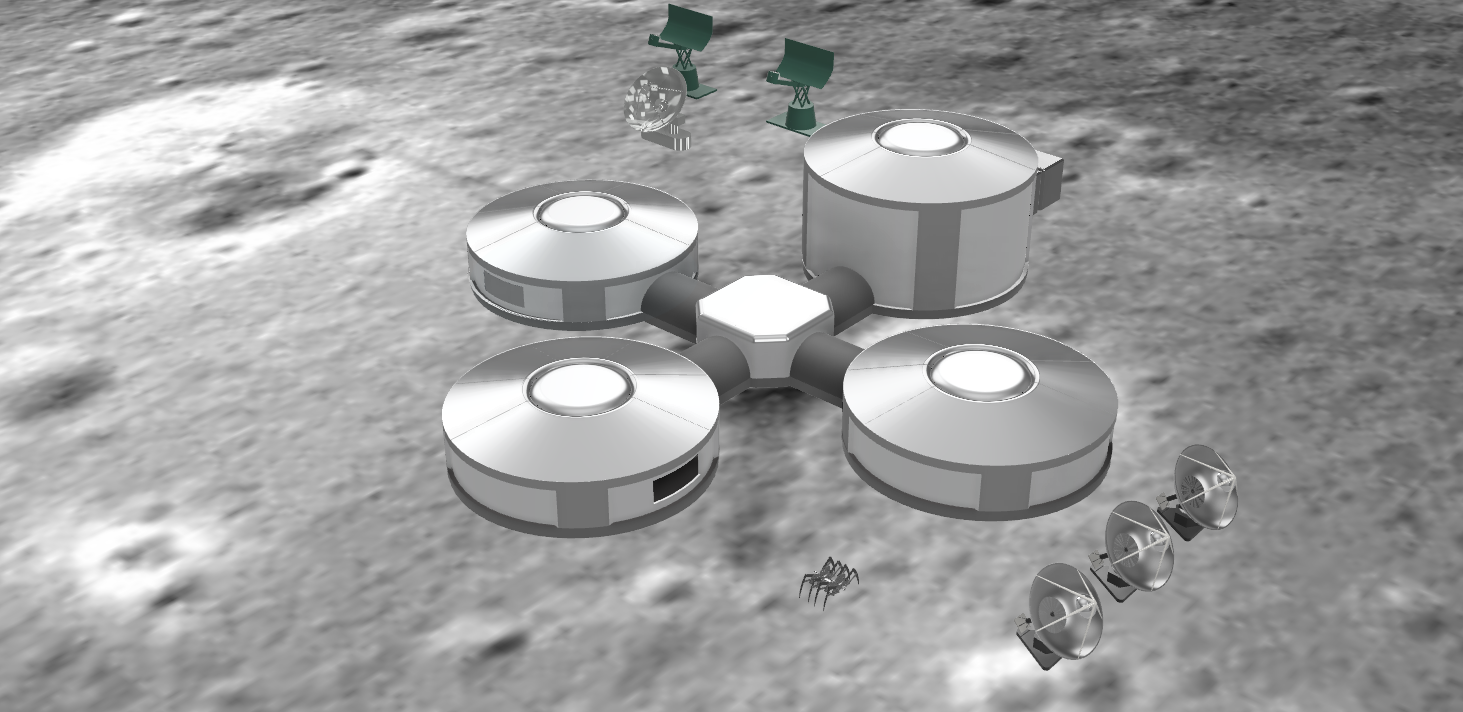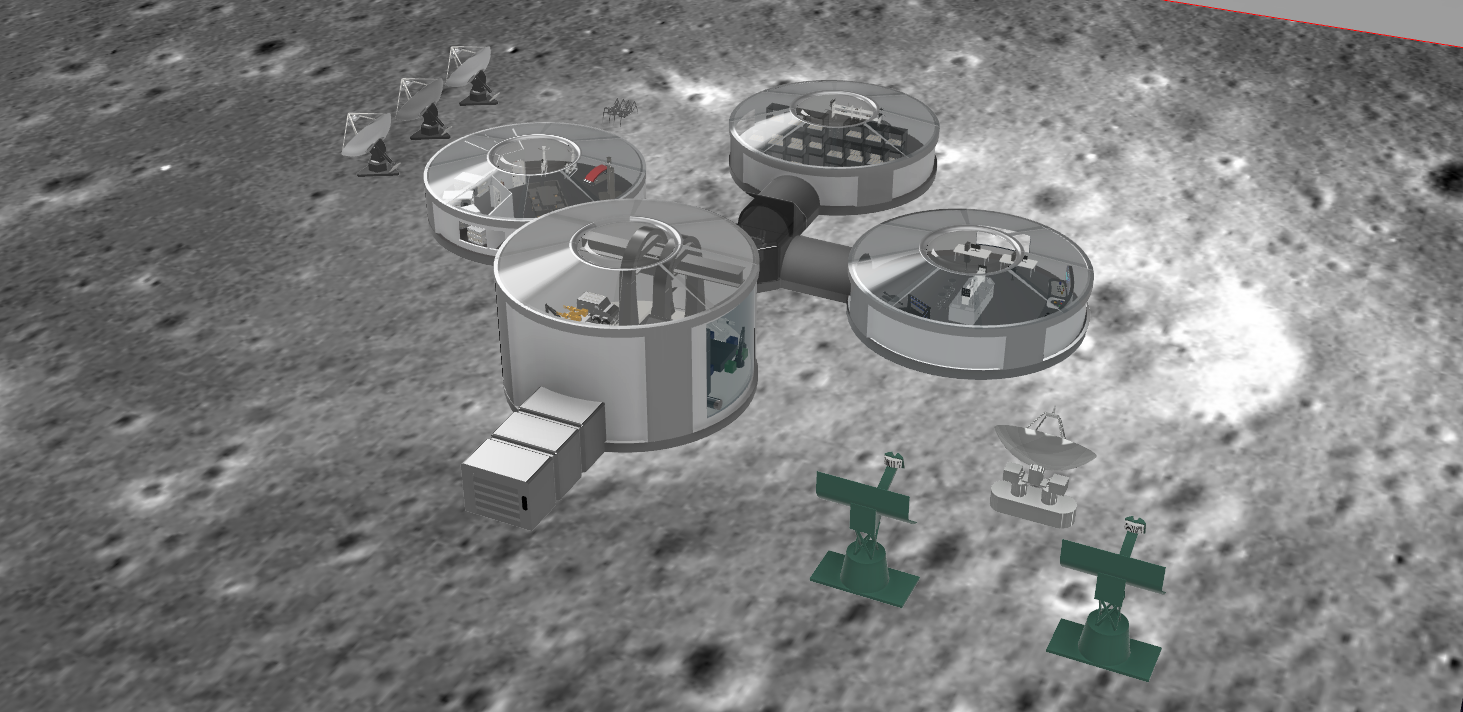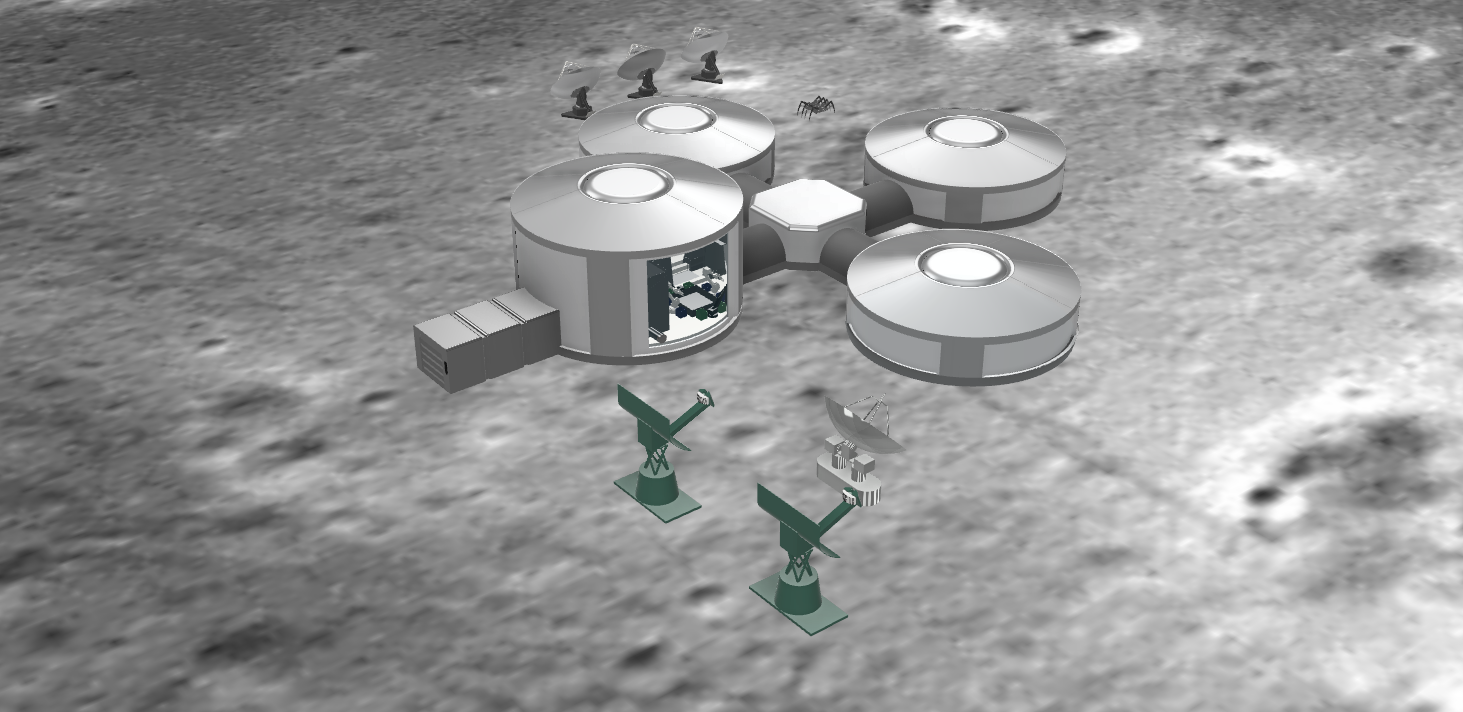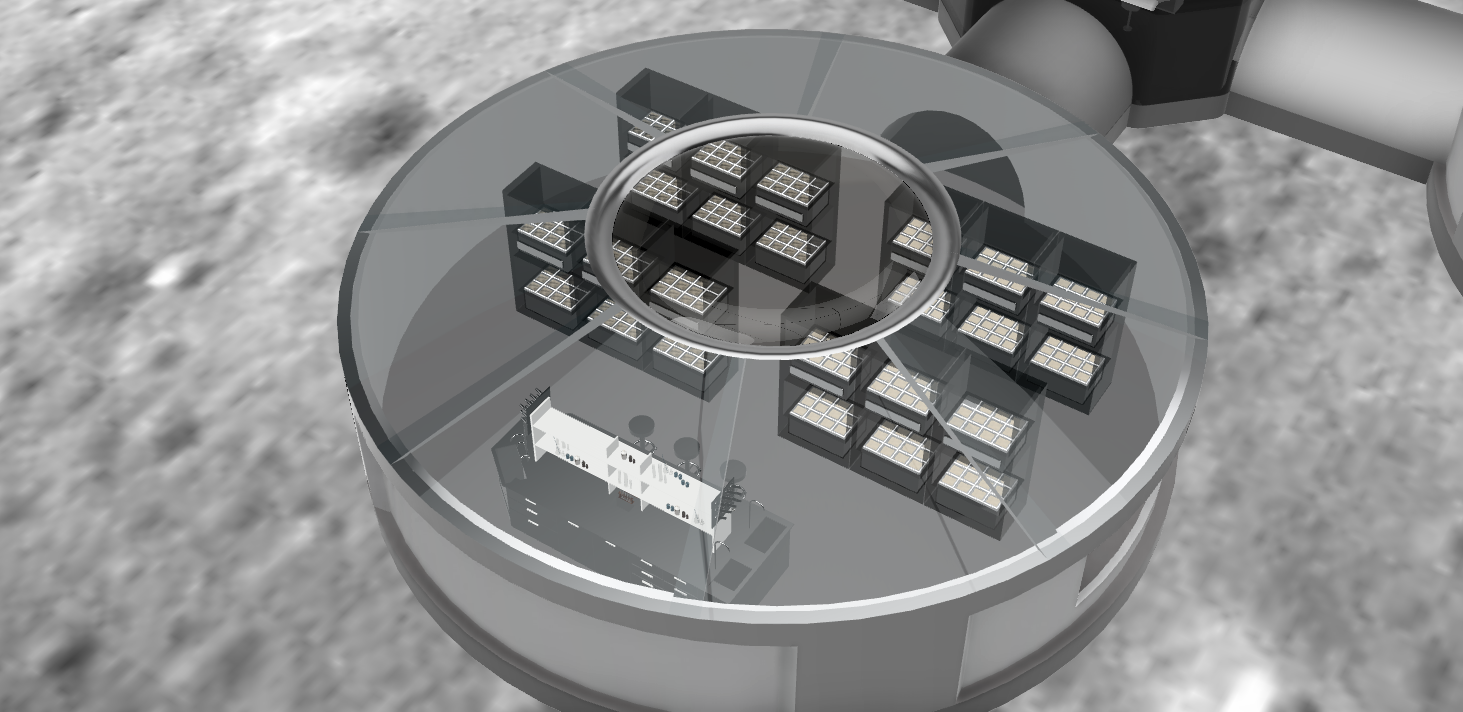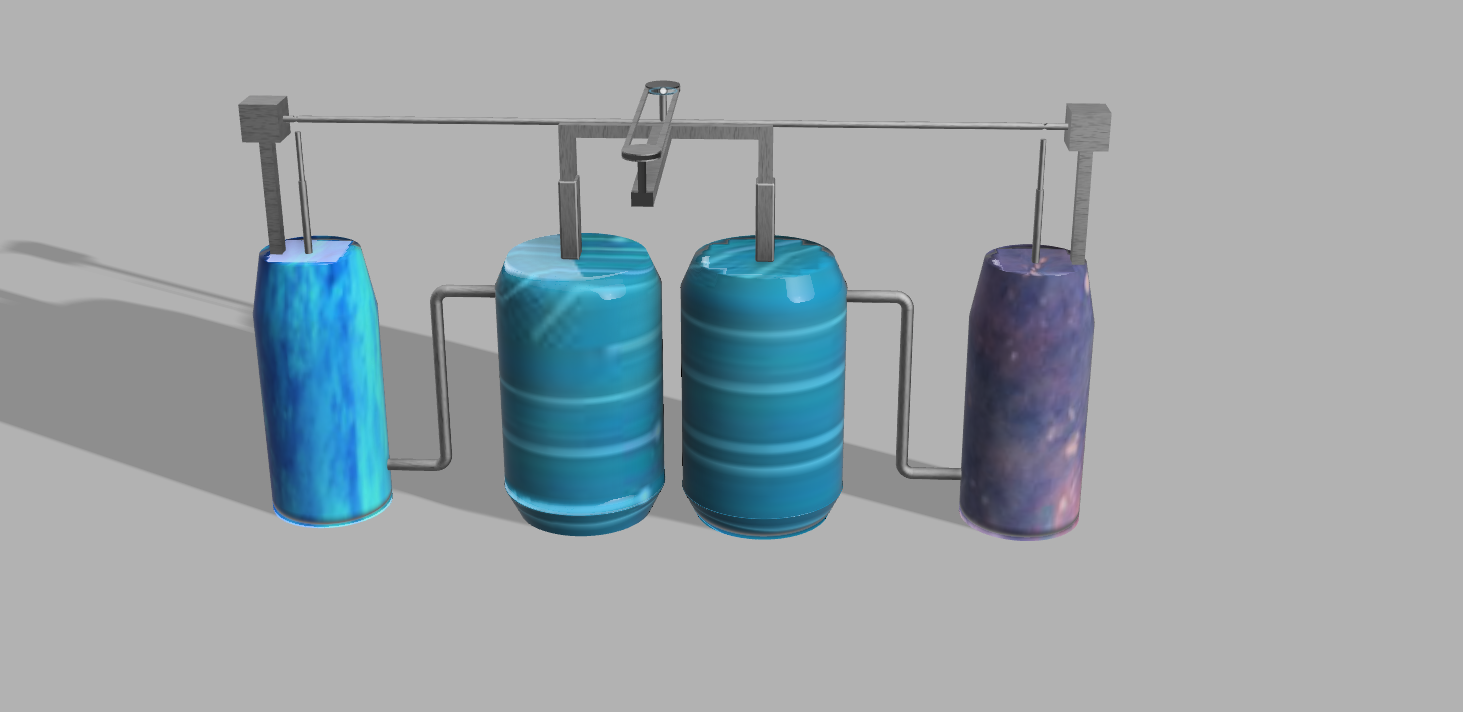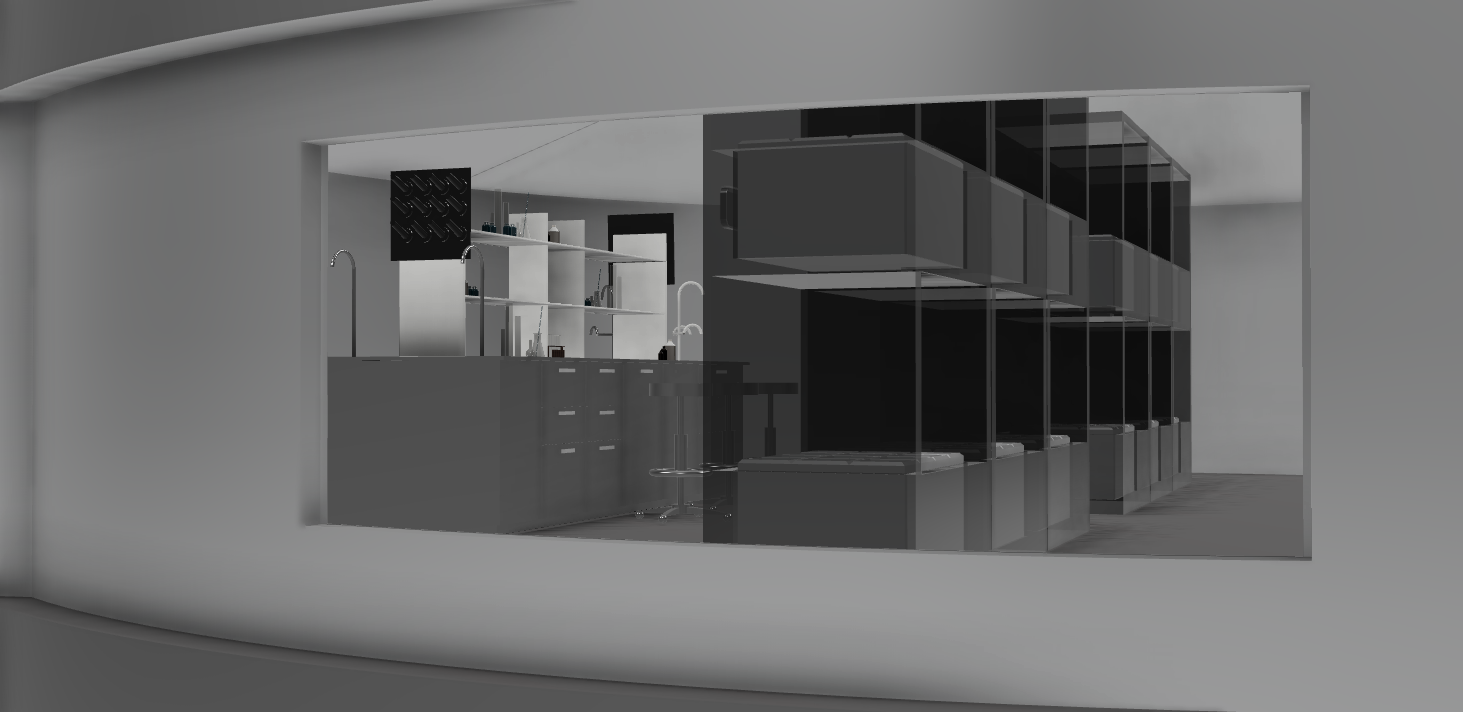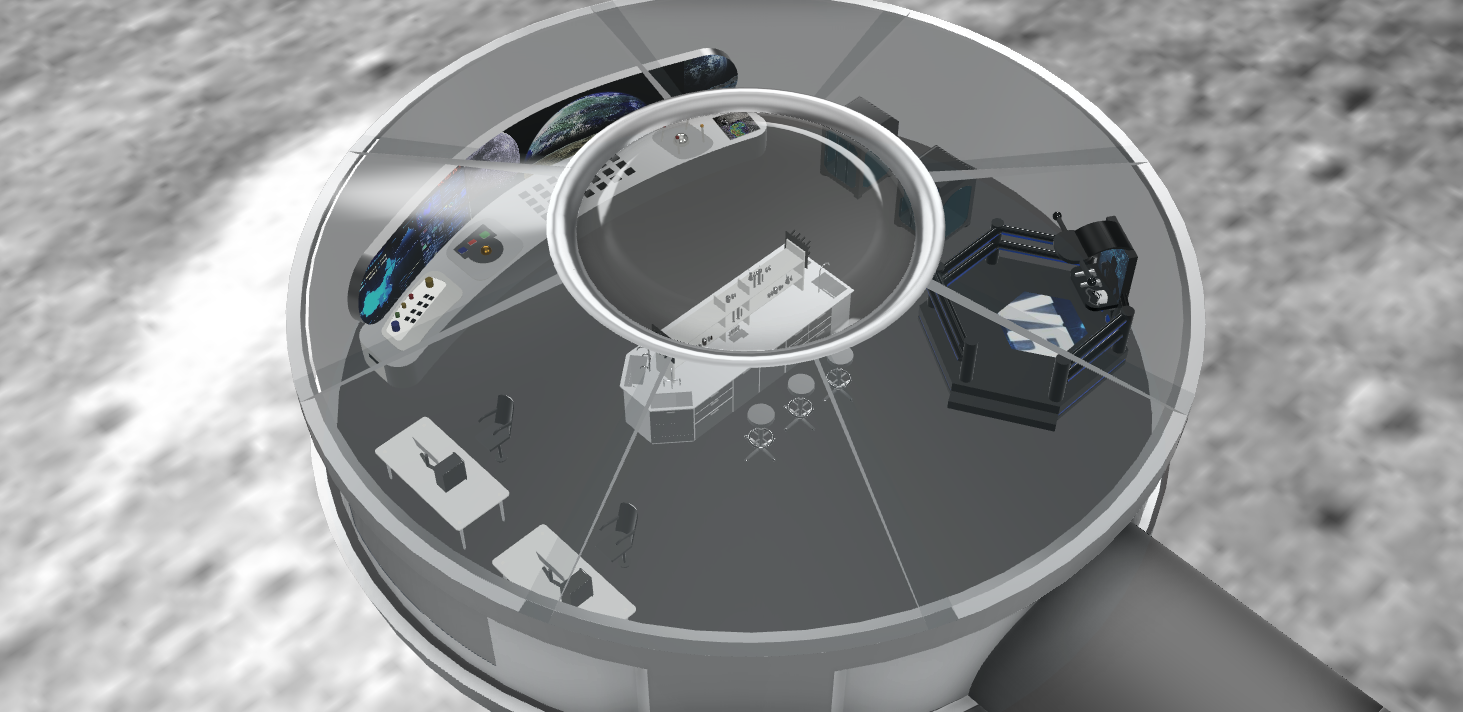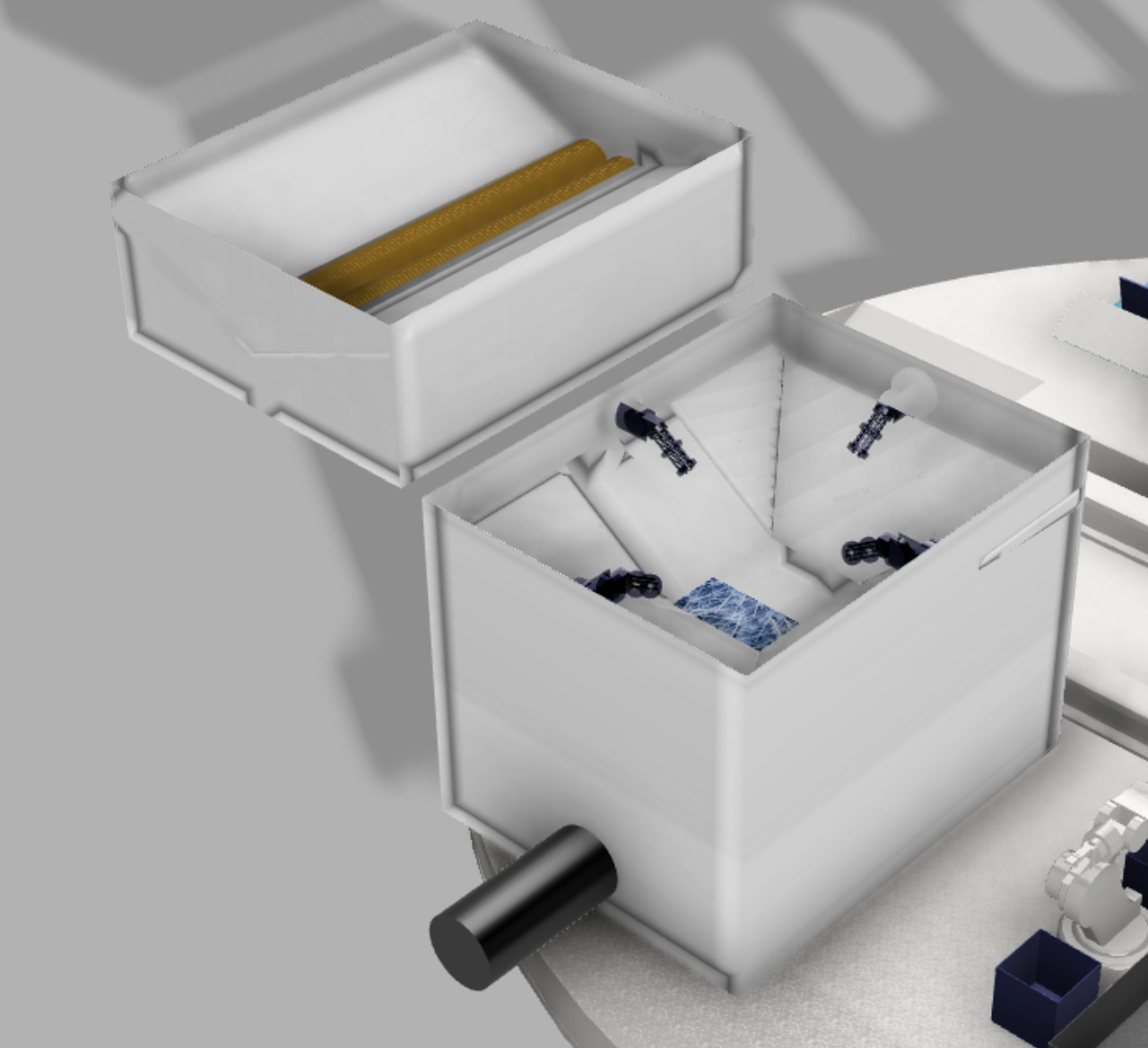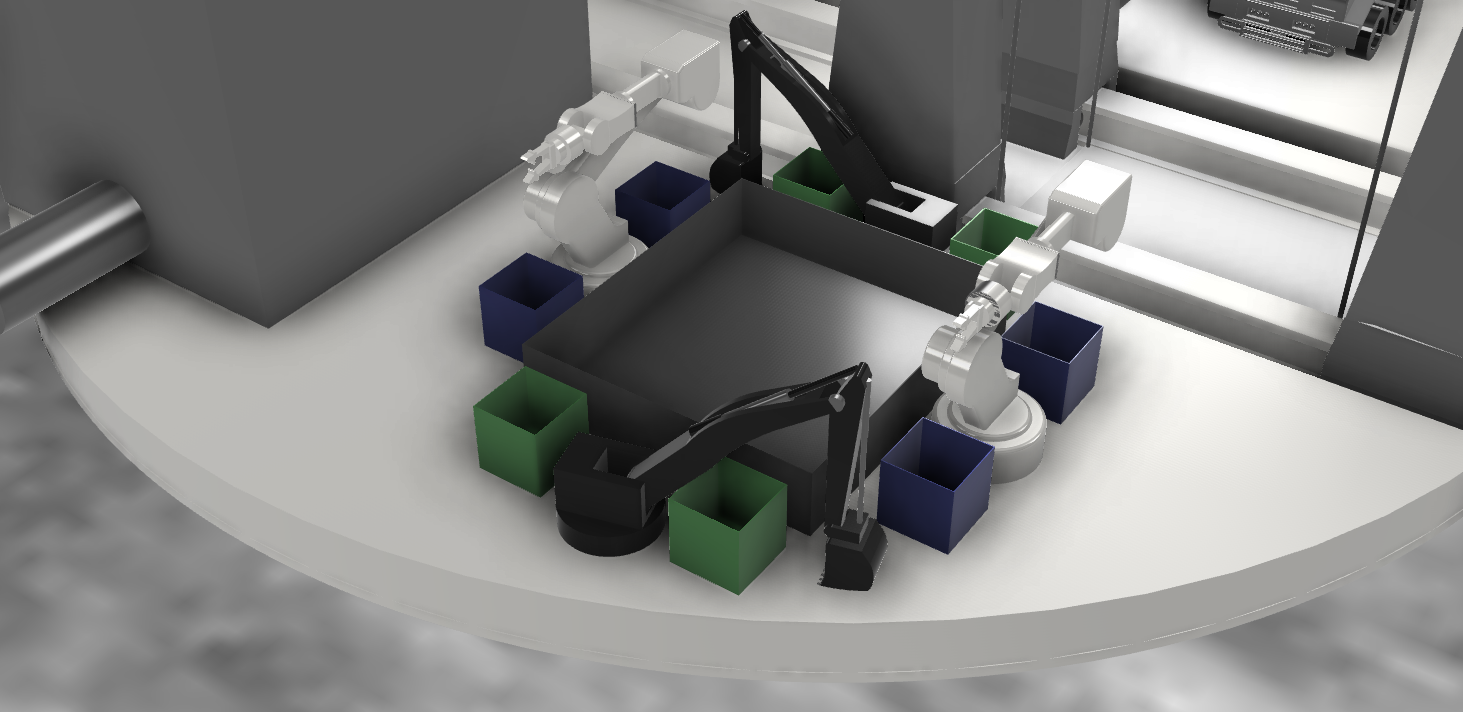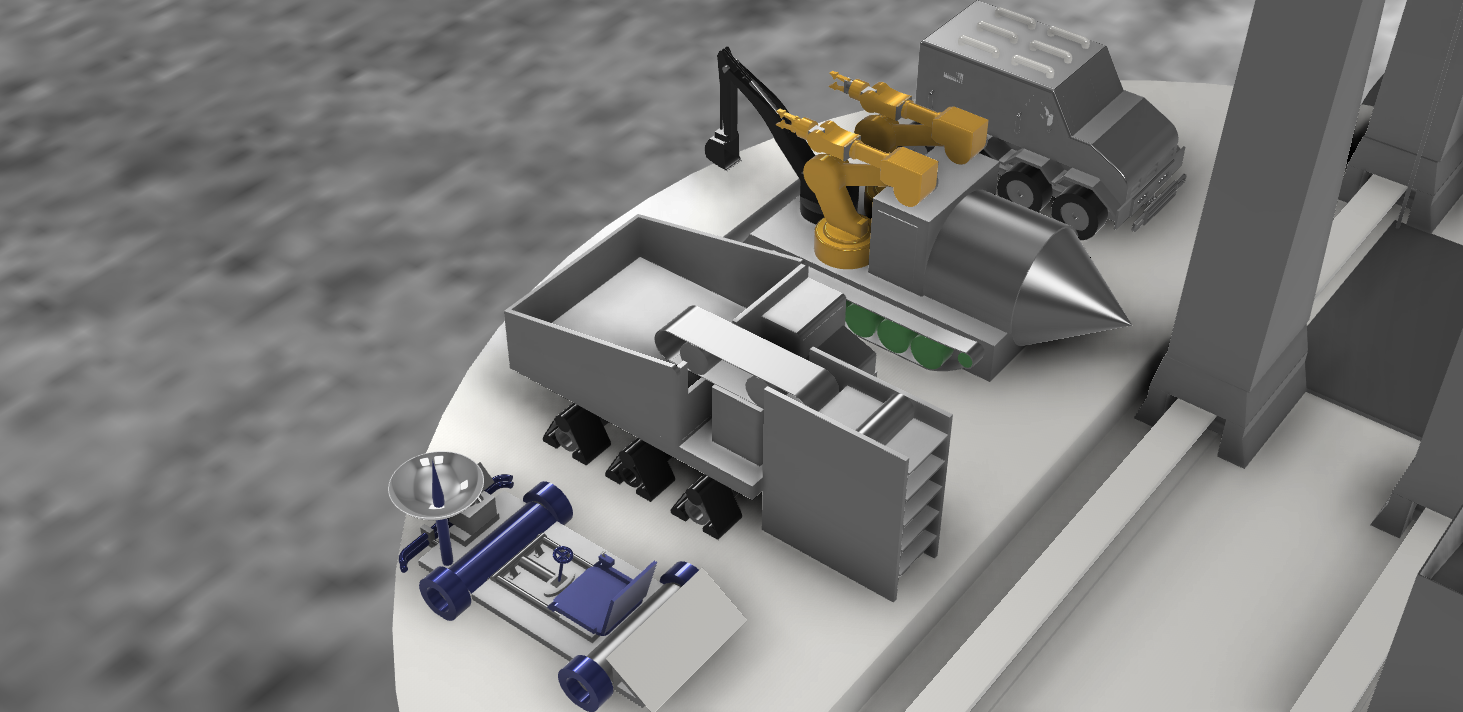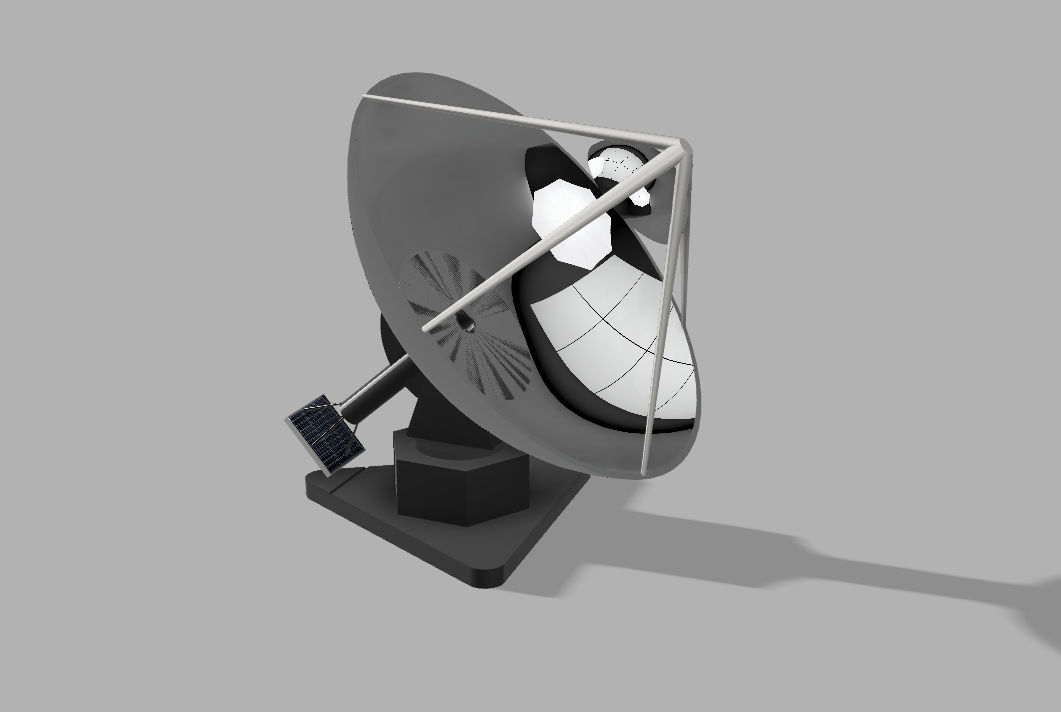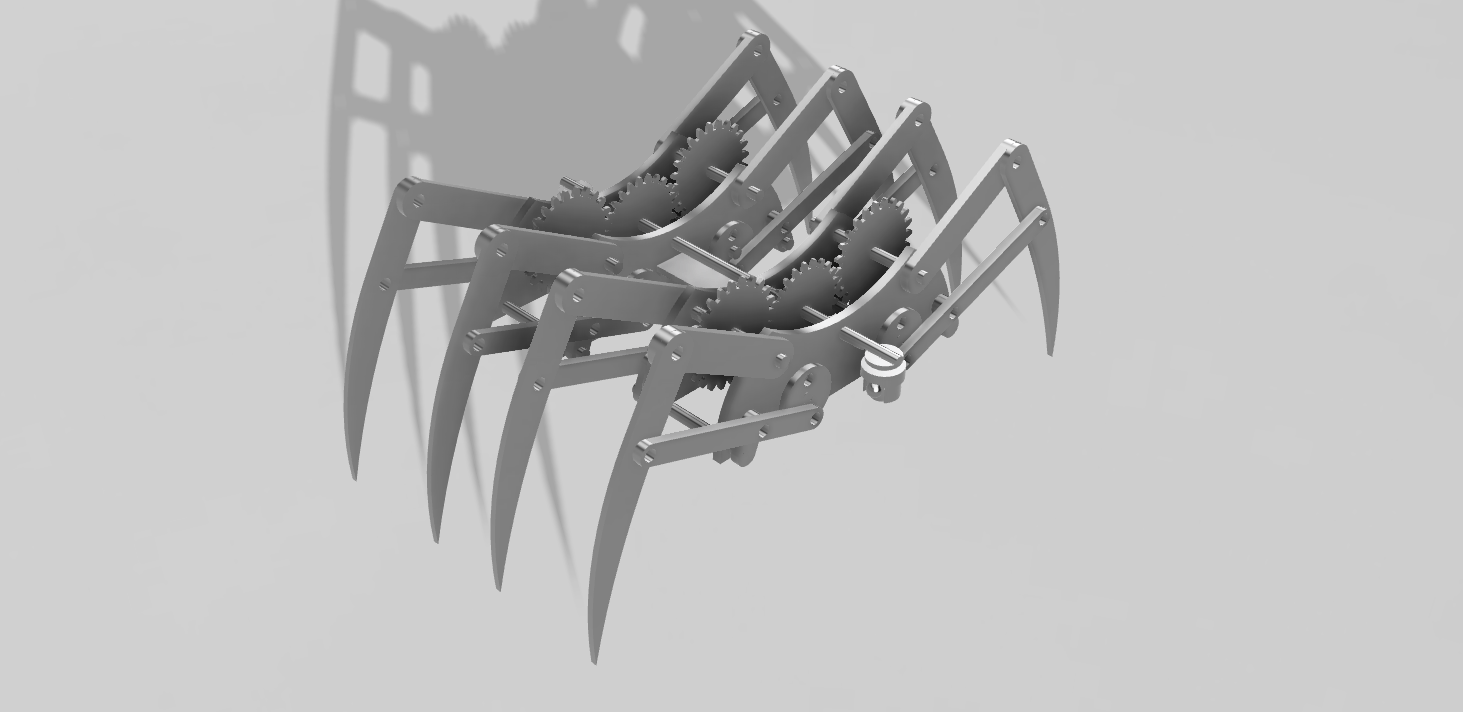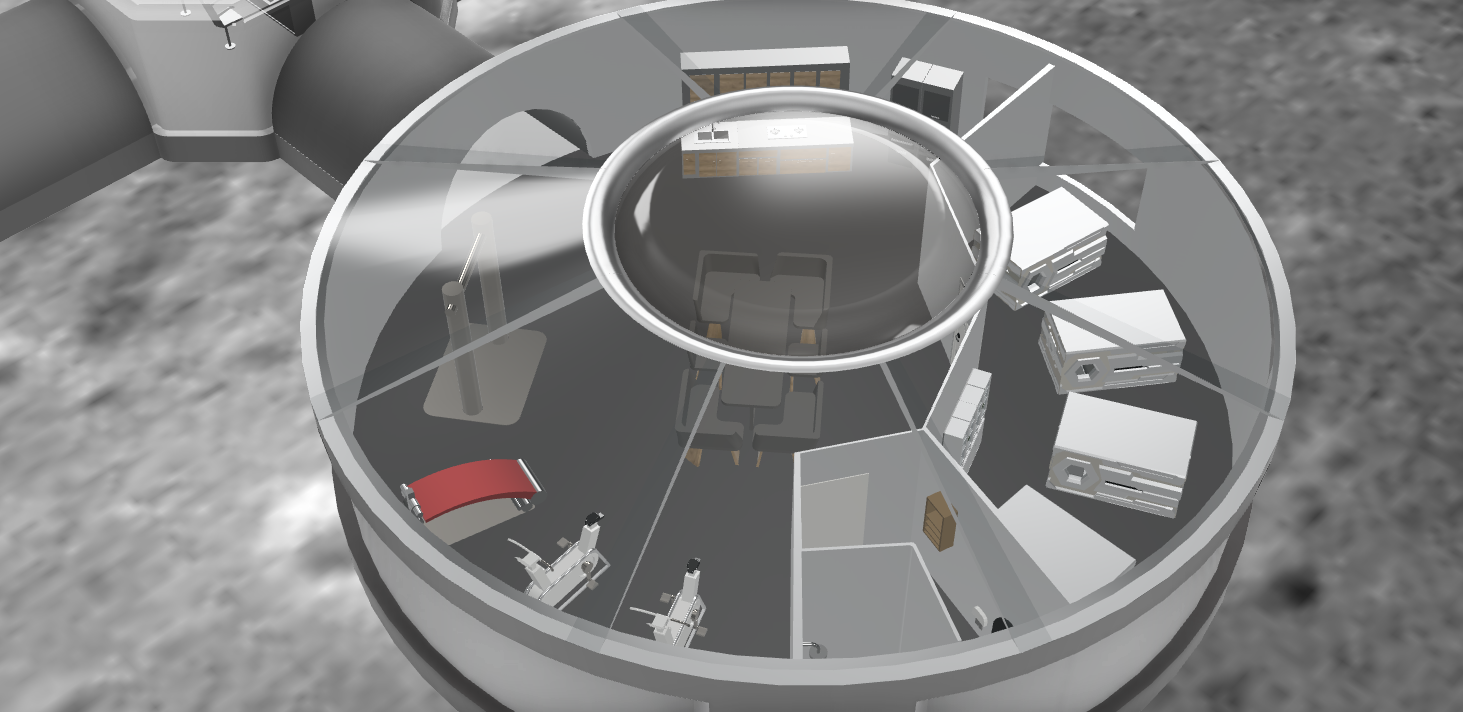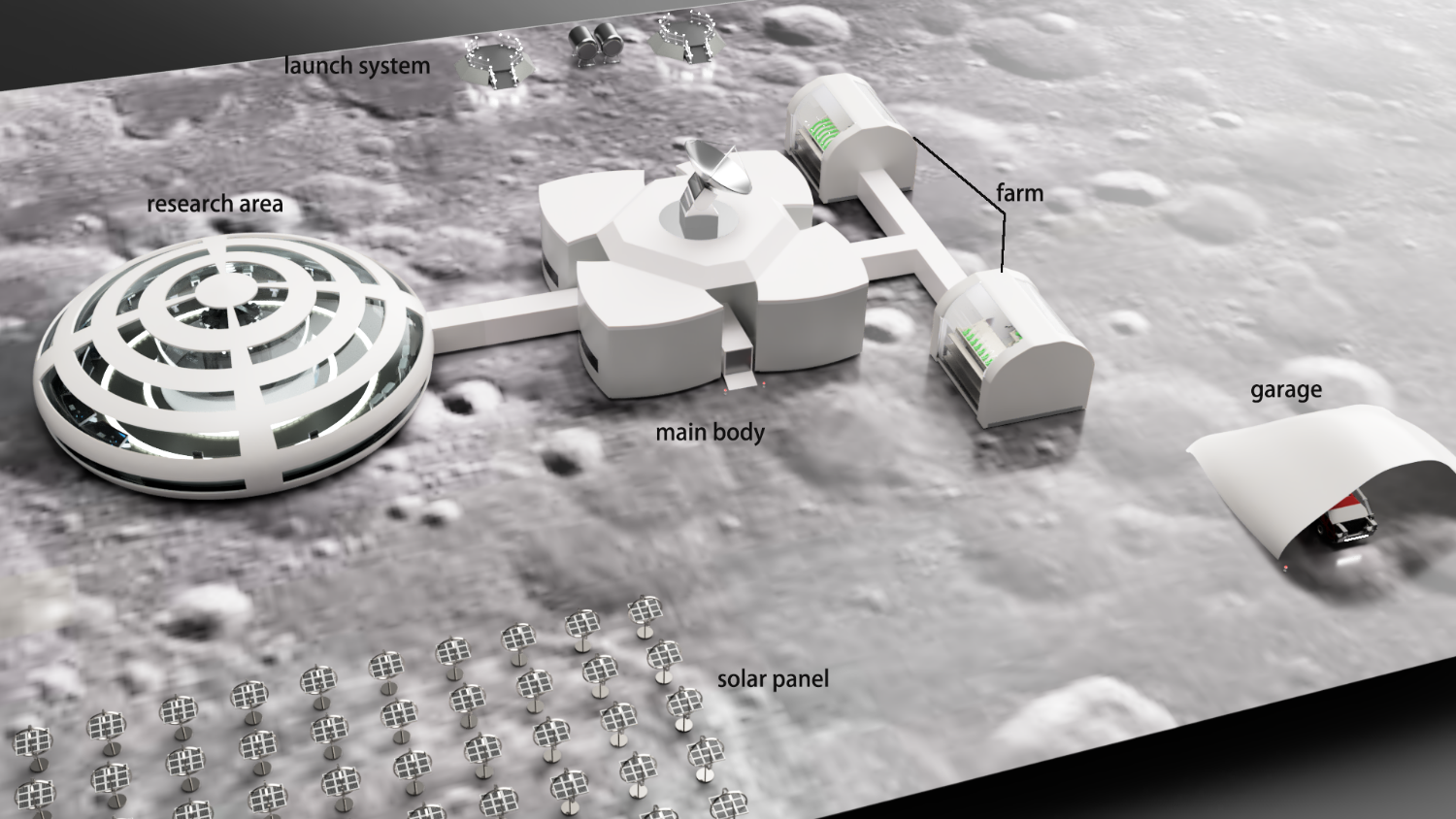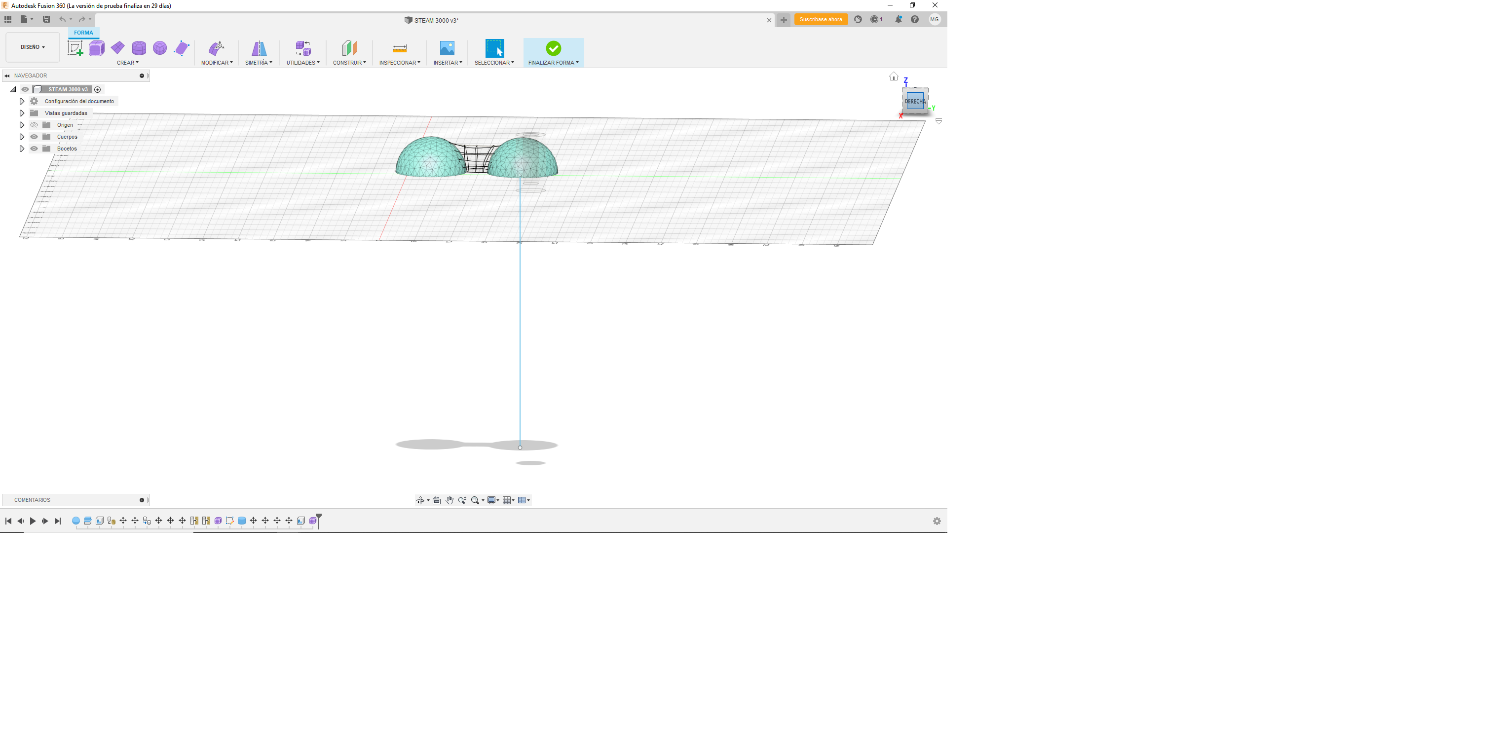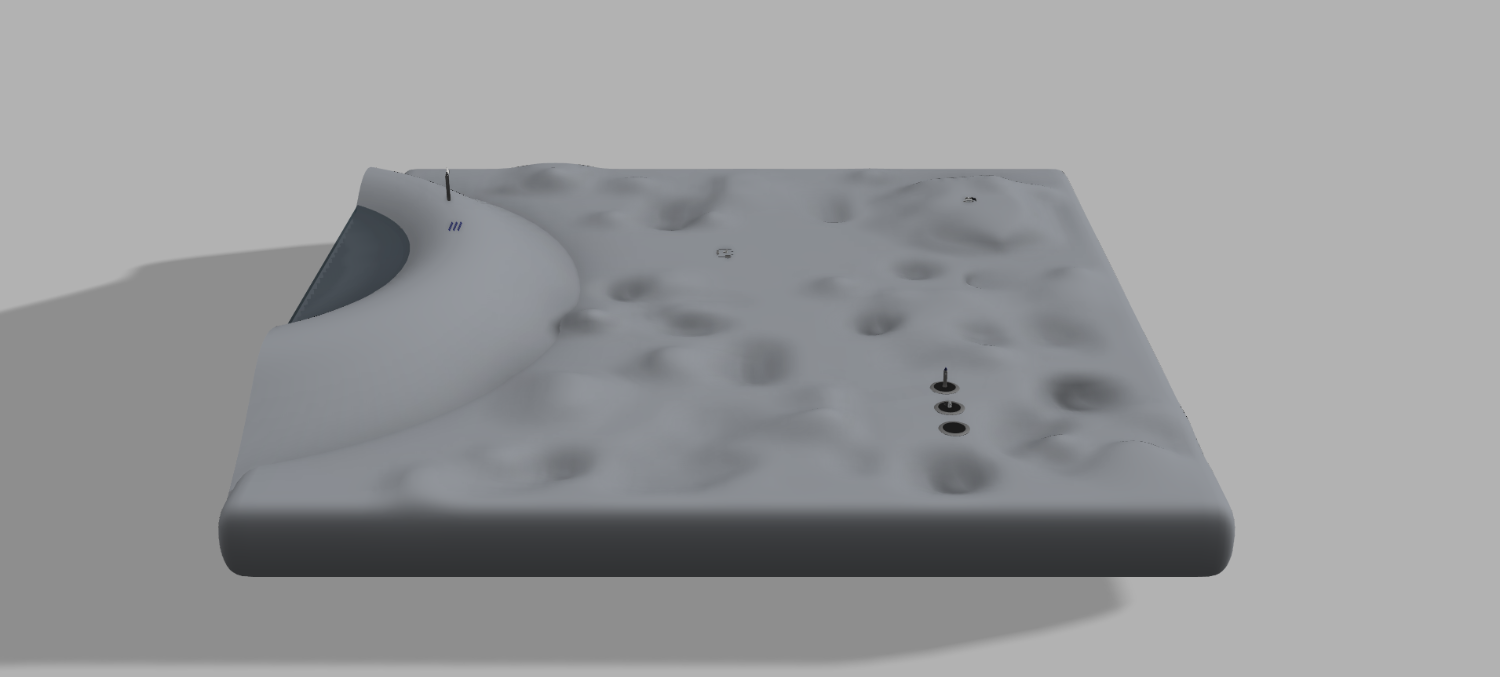Moon Camp Pioneers Gallery 2021-2022
In Moon Camp Pioneers each team’s mission is to 3D design a complete Moon Camp using Fusion 360. They also have to explain how they will use local resources, protect astronauts from the dangerous of space and describe the living and working facilities.
Team: Bvheart
郑州轻工业大学附属中学 河南省郑州市 China 19, 18 3 / 2
External viewer for 3d project
|
Project description
The purpose of the project is to allow people to experiment on the moon and prepare for long-term residence on the moon in the future. Considering the various environments on the moon, food supplies and the like first need to be transported from the earth to the camp. Later, we will make use of the things on the moon, such as the ice under the shadow of the moon and the water in the lunar ore, and consider eating the vegetables planted in the camp in the later stage. Our model camp consists of four parts: rest area, experimental area, ecological planting area and detection preparation area. In addition, there are lunar dust treatment channel, solar energy power generation area and radar area outside the model to meet the experiments on the moon and the long-term development in the future. |
|||
|
2.1 Where do you want to build your Moon Camp?
We will build the camp at the south pole of the moon. There is a Shackleton crater at the south pole of the moon, which is a good choice. It has 80% of the time to out under the sunshine to meet the power supply demand. At the same time, the interior of the crater is a permanent shadow area, where ice may be stored. By building a space station on the edge of the crater, solar power stations that produce electricity can be set up in sunny places and transmitted to the space station through cables or microwaves. 2.2 How do you plan to build your Moon Camp? Describe the techniques, materials and your design choices.
We will launch the lunar robot into space first, consider deforming the camp on the earth, and then launch it on the moon. The lunar robot will assist the deployment of the camp, which is like a semicircle like an umbrella. We will consider using 3D printing technology. In the later stage, we may use the lunar soil, which is a natural protective material against cosmic radiation. In the early selection of building materials for the moon, we fully considered our environmental hazards on the moon: radiation, high temperature difference, lunar dust, meteorite impact and a series of problems. Therefore, our camp building will use two layers of titanium sandwiched with a layer of boron hydride nanotube layer. Firstly, titanium has good low thermal conductivity and high strength, and hydride can eliminate space radiation. The wall design can well solve the problems of radiation, high temperature difference and the firmness of the camp. 2.3 The environment on the Moon is very dangerous for the astronauts. Explain how your Moon Camp will protect them. (maximum 150 words)
For the treatment of lunar dust, while ensuring the absolute tightness of the camp, we will build a low-pressure lunar dust treatment area at the entrance and exit of the camp. The Lunar dust treatment area and the camp are isolated from each other through a low-pressure zone to fully ensure the absolute dust-free inside the camp. For meteorite impact, there is no material that can perfectly resist meteorite, Therefore, considering the safety and feasibility of the camp and the premise of astronauts’ lives, we chose the elevator scheme. When the radar predicts that the meteorite is approaching, the astronauts will enter the rest area for the first time, and then the rest area will fall below the ground under the action of the elevator. At the same time, the sky over the base will be supported and protected to ensure the safety of astronauts to the greatest extent. |
|||
|
2.4 Explain how your Moon Camp will provide the astronauts with:
|
Water
|
Food
|
Power
|
Air
|
|
When astronauts first landed on the moon, water resources were brought from the earth by humans. In the subsequent production and development, water resources were mainly mined by lunar mining vehicles in the permanent shadow area of the lunar polar region. At the same time, we install pipelines to the water purification system where water is needed in the base. In the purification system, we complete the purification through a series of measures such as physical filtration, chemical precipitation, reverse osmosis, ion exchange and so on. After purification, the water resources will be stored for subsequent use by astronauts. |
In the early stage, we will still transport food from the earth to the moon. In the later stage, we may eat the plants cultivated in the camp. |
We will use solar panels to generate electricity, build solar power plants near the Shikengkou where the sun is almost permanent irradiation and transmit power to the space station through cables or microwaves. If a technological breakthrough can be achieved, tritium from the moon can be extracted for power generation. |
We will transport the carbon dioxide generated by activities in the camp to the ecological planting area, so that plants can use carbon dioxide to produce oxygen, and calcium peroxide can react with carbon dioxide and water to produce oxygen. |
|
2.5 Explain what would be the main purpose of your Moon Camp.
The main purpose of establishing the lunar camp is to carry out experiments and make certain preparations for human future exploration and migration to the moon or other planets. At the same time, the gravity on the moon is one tenth of that on the earth. It is considered to launch rockets on the moon for space exploration in the future. |
|||
|
3.1 Describe a day on the Moon for your Moon Camp astronaut crew.
At 7:00 in the morning, the astronauts woke up from the sleeping module, washed and ate breakfast, and began to prepare for experiments and exploration of the moon. At 8:00 a.m., the astronauts released the lunar exploration spider from the camp and it began its work. Astronauts also put on their spacesuits and took a rover to collect minerals near the moon. After the mine car is mined, the ore is automatically transported to the car and then returned. At 11:00 a.m., the astronauts return to the camp. Before entering the camp, the lunar dust will be treated. The outermost power shield will make the lunar dust charged and easier to be removed. The second layer will be purged with carbon dioxide for secondary treatment. Then the astronauts can enter the camp safely. The lunar rover loaded with ore will transport the ore to the ore sorting area for ore classification for research. After a short rest, lunch, entertainment and exercise at 2:00 p.m., the astronauts began the experiment in the afternoon, and conducted further data analysis and research according to the ore collected in the morning and the images sent back by the spider cart. The astronauts monitored the status of the camp in the control area and the information from outer space monitored by radar. At 4:00 p.m., the astronauts came to the ecological planting area to monitor the growth status of plants, and compared the data of plants with the natural plants on earth for data feedback. At 6:00 p.m., the astronauts began the day’s dinner. After entertainment and adjustment, they entered the sleep cabin to remove the fatigue of the day and prepare for the next day’s research. |
|||


